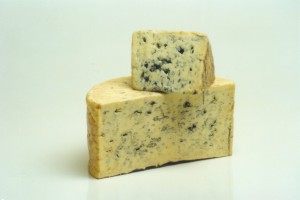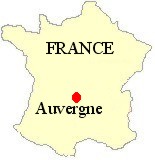
|
|
|||||
Bleu d'Auvergne is made in the Massif Central, mainly in the areas of Puy-de-Dôme and Cantal. This cheese was first made in 1850 when a peasant farmer in the area of Laqueuille seeded his milk curds with rye-bread moulds and stabbed the cheese with a needle - it is believed that he was trying to copy the famous Roquefort cheese. The result was very successful and soon its popularity spread throughout the region. Smaller farms enjoyed making Bleu d'Auvernge since each cheese required much less milk than the huge Cantal cheese from the same area. It gained its A.O.C. accreditation on 7 March 1975 which was modified on 29 December 1986 allowing it to be produced over a greater area. Today the mould Penecillium glaucum is added to the milk and the cheeses are pierced with needles after salting. The blue then forms after 3 weeks maturation. Blue d'Auvernge is a full bodied, salty and slightly piquant cheese with a pale creamy paste and dark blue veining. It is matured in cool cellars for one to two months before being wrapped in foil and matured for another month or so. It is best in the late summer and early autumn although it is excellent throughout the year - some of the best we have tasted was in fact made in the spring. The cheese is often made in commercial dairies. Ours, however, is produced at a mountain farm which is faithful to the original methods and is made from unpasteurised cows' milk from the dark chestnut Salers cow. Each cheese measures 250mm in diameter, 150mm high and weighs approximately 2.5kg. It has a fat content of 45-50%. Bleu d'Auvergne is excellent in salad dressings or pasta sauce and of course, as part of a cheeseboard. It is best enjoyed with a full bodied red wine - Crozes Hermitage, a good Cahors, or a Chateauneuf-du-Pape. Click here or press your 'Back' button to return |
|
|||||
| All articles © www.teddingtoncheese.co.uk | ||||||
